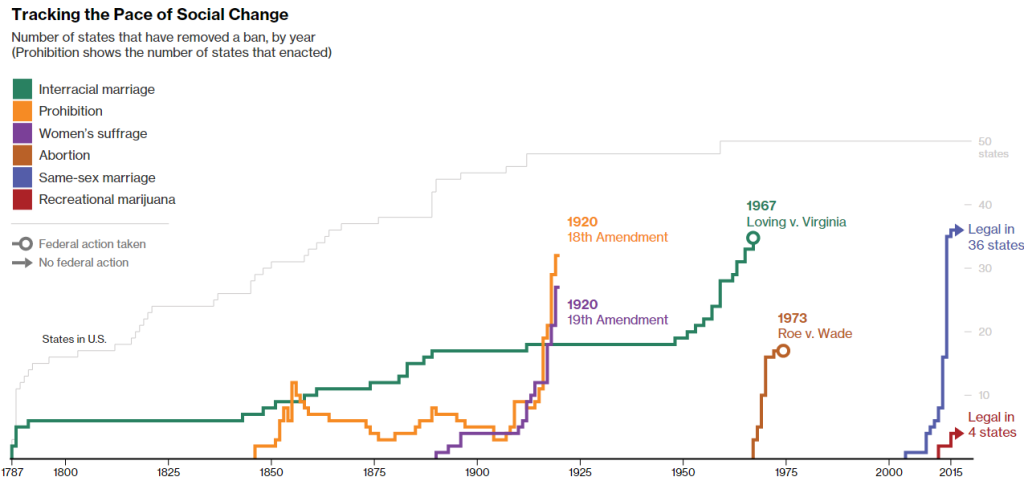Bloomberg Business has an interesting post about the speed with which Americans change their minds on major social issues, complete with misleading graph above. I say misleading primarily because the graph stops at major milestones (Constitutional amendments or SCOTUS cases), and this gives an unjustified sense of finality to the change of mind, as though–having gone one direction–the transition is ultimately a complete switch.
Calling it misleading might be a little harsh. It does show exactly what it purports to show, and the authors even note that “the movement to legalize abortion is something of an outlier here. It ultimately may have followed the same pattern as other issues—but we’ll never know, because in 1973 the Supreme Court’s decision in Roe v. Wade cleared the way for legal abortions.” That’s a reasonable characterization, but it s somewhat contradicted in the following paragraph: “By acting before a critical mass of states was in support, the Supreme Court pre-empted what had been a steady popular movement in the states toward abortion rights.”
Just how steady and popular has that movement been in the decades since? I considered that question over a year ago when I contrasted the fate of interracial marriage and abortion (two controversial-at-the-time social issues) up to the present date.


As you can see, support for interracial marriage rose on a more or less steady trajectory from only 4% in 1959 to 87% in 2013. Abortion, on the other hand, has been flatlined (more or less) for the past 40 years. So if the Bloomberg Business chart were really “tracking the pace of social change” they should have picked not state-level support (which is kind of meaningless) but rather polling data, and then they should have carried it forward as far as possible instead of just stopping at the point of legalization. If they had done so, the graph would show two different kinds of rapid social changes. One, like interracial marriage, would show a genuine change in America’s views over time. Others, like abortion, would show that this change has stalled and would instead show lasting controversy.
It seems increasingly likely that same-sex marriage will soon become the law of the land. It is much less clear which of these two categories it will fit into: eventual universal acceptance or long-lasting controversy.
